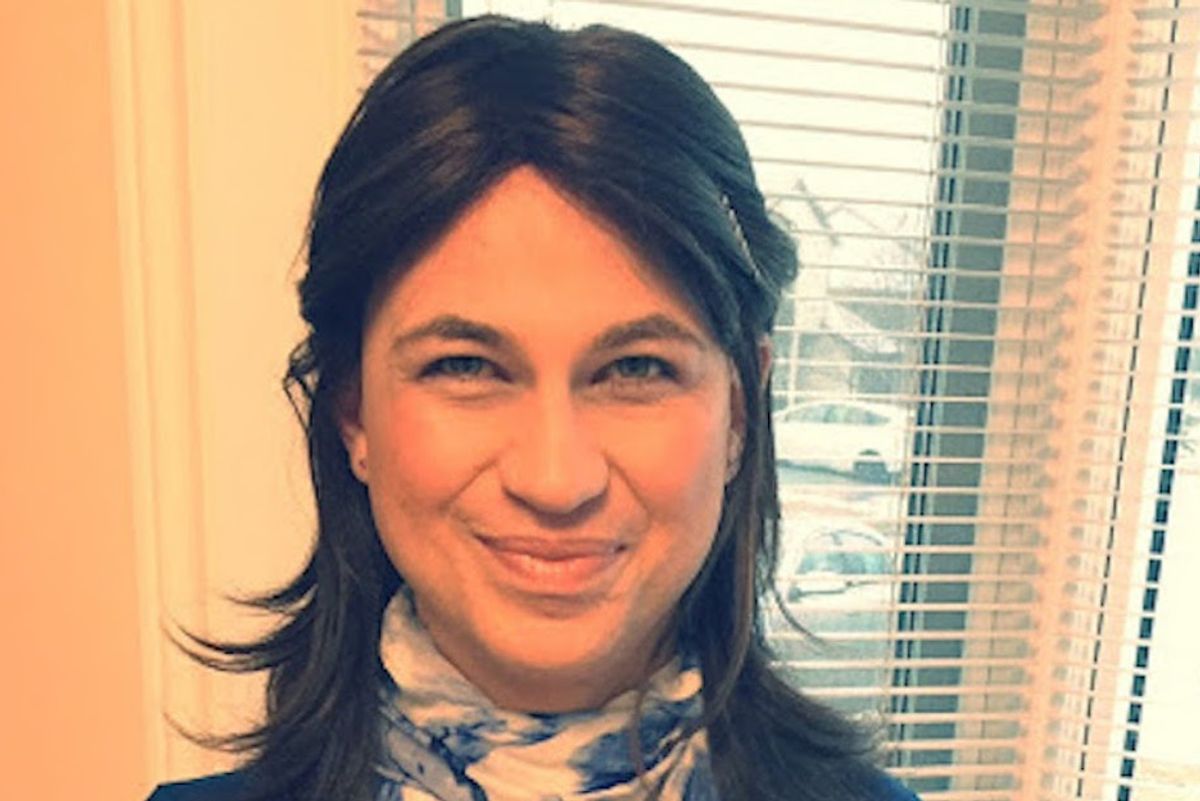My wife surprised her coworkers when she came out as trans. Then they surprised her.
She was ready for one reaction but was greeted with a beautiful response.

Zoe comes out to her coworkers.
Society, pay attention. This is important.
My wife, Zoe, is transgender. She came out to us — the kids and me — last summer and then slowly spread her beautiful feminine wings with extended family, friends, and neighbors.
A little coming out here, a little coming out there — you know how it is.
It's been a slow, often challenging process of telling people something so personal and scary, but pretty much everyone has been amazing.
However, she dreaded coming out at the office.
She works at a large technology company, managing a team of software developers in a predominantly male office environment. She's known many of her co-workers and employees for 15 or so years. They have called her "he" and "him" and "Mr." for a very long time. How would they handle the change?
While we have laws in place in Ontario, Canada, to protect the rights of transgender employees, it does not shield them from awkwardness, quiet judgment, or loss of workplace friendships. Your workplace may not become outright hostile, but it can sometimes become a difficult place to go to every day because people only tolerate you rather than fully accept you.
But this transition needed to happen, and so Zoe carefully crafted a coming out email and sent it to everyone she works with.
The support was immediately apparent; she received about 75 incredibly kind responses from coworkers, both local and international.
She then took one week off, followed by a week where she worked solely from home. It was only last Monday when she finally went back to the office.
First day back at work! I asked if I could take a "first day of school" type picture with her lunchbox. She said no. Spoilsport.
Despite knowing how nice her colleagues are and having read so many positive responses to her email, she was understandably still nervous.
Hell, I was nervous. I made her promise to text me 80 billion times with updates and was more than prepared to go down there with my advocacy pants on if I needed to (I might be a tad overprotective).
And that's when her office pals decided to show the rest of us how to do it right.
She got in and found that a couple of them had decorated her cubicle to surprise her:

Her cubicle decorated with butterflies.
All photos by Amanda Jette, used with permission.
Butterflies! Streamers! Rainbows! OMG!
And made sure her new name was prominently displayed in a few locations:

Zoe written on the board.
All photos by Amanda Jette, used with permission.
They got her a beautiful lily with a "Welcome, Zoe!" card:

Welcome lily and card
All photos by Amanda Jette, used with permission.
And this tearjerker quote was waiting for her on her desk:

A quote from Oscar Wilde.
All photos by Amanda Jette, used with permission.
To top it all off, a 10 a.m. "meeting" she was scheduled to attend was actually a coming out party to welcome her back to work as her true self — complete with coffee and cupcakes and handshakes and hugs.

Coming out party with cupcakes.
All photos by Amanda Jette, used with permission.
(I stole one, and it was delicious.)
NO, I'M NOT CRYING. YOU'RE CRYING.
I did go to my wife's office that day. But instead of having my advocacy pants on, I had my hugging arms ready and some mascara in my purse in case I cried it off while thanking everyone.
I wish we lived in a world where it was no big deal to come out.
Sadly, that is not the case for many LGBTQ people. We live in a world of bathroom bills and "religious freedom" laws that directly target the members of our community. We live in a world where my family gets threats for daring to speak out for trans rights. We live in a world where we can't travel to certain locations for fear of discrimination — or worse.
So when I see good stuff happening — especially when it takes place right on our doorstep — I'm going to share it far and wide. Let's normalize this stuff. Let's make celebrating diversity our everyday thing rather than hating or fearing it.
Chill out, haters. Take a load off with us.
It's a lot of energy to judge people, you know. It's way more fun to celebrate and support them for who they are.
Besides, we have cupcakes.
This article originally appeared on 04.08.16.
- Mom shares her wholesome and hilarious response to son's letter ... ›
- I was afraid to come out as transgender. My mom's response gives ... ›
- 5 ways to support your trans friends when they come out. - Upworthy ›
- Mom explains 'coming out' to kids, people are praising her - Upworthy ›
- Video shows how men and women enter work differently - Upworthy ›
- Woman supporting gay husband receives outpouring of kindness - Upworthy ›

